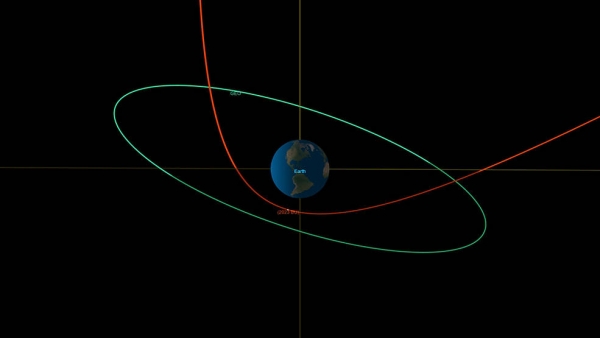Asteroid 2023 BU is about the size of a box truck and is predicted to make one of the closest approaches by a near-Earth object ever recorded.
On Thursday, Jan. 26, a small near-Earth asteroid will have a very close encounter with our planet. Designated 2023 BU, the asteroid will zoom over the southern tip of South America at about 4:27 p.m. PST (7:27 p.m. EST) only 2,200 miles (3,600 kilometers) above the planet’s surface and well within the orbit of geosynchronous satellites.
There is no risk of the asteroid impacting Earth. But even if it did, this small asteroid – estimated to be 11.5 to 28 feet (3.5 to 8.5 meters) across – would turn into a fireball and largely disintegrate harmlessly in the atmosphere, with some of the bigger debris potentially falling as small meteorites.
The asteroid was discovered by amateur astronomer Gennadiy Borisov, discoverer of the interstellar comet 2I/Borisov, from his MARGO observatory in Nauchnyi, Crimea, on Saturday, Jan. 21. Additional observations were reported to the Minor Planet Center (MPC) – the internationally recognized clearinghouse for the position measurements of small celestial bodies – and the data was then automatically posted to the Near-Earth Object Confirmation Page. After sufficient observations were collected, the MPC announced the discovery. Within three days, a number of observatories around the world had made dozens of observations, helping astronomers better refine 2023 BU’s orbit.
Read more at NASA
Image: This orbital diagram from CNEOS’s close approach viewer shows 2023 BU’s trajectory – in red – during its close approach with Earth on Jan. 26, 2023. The asteroid will pass about 10 times closer to Earth than the orbit of geosynchronous satellites, shown in green line. (Credits: NASA/JPL-Caltech)


